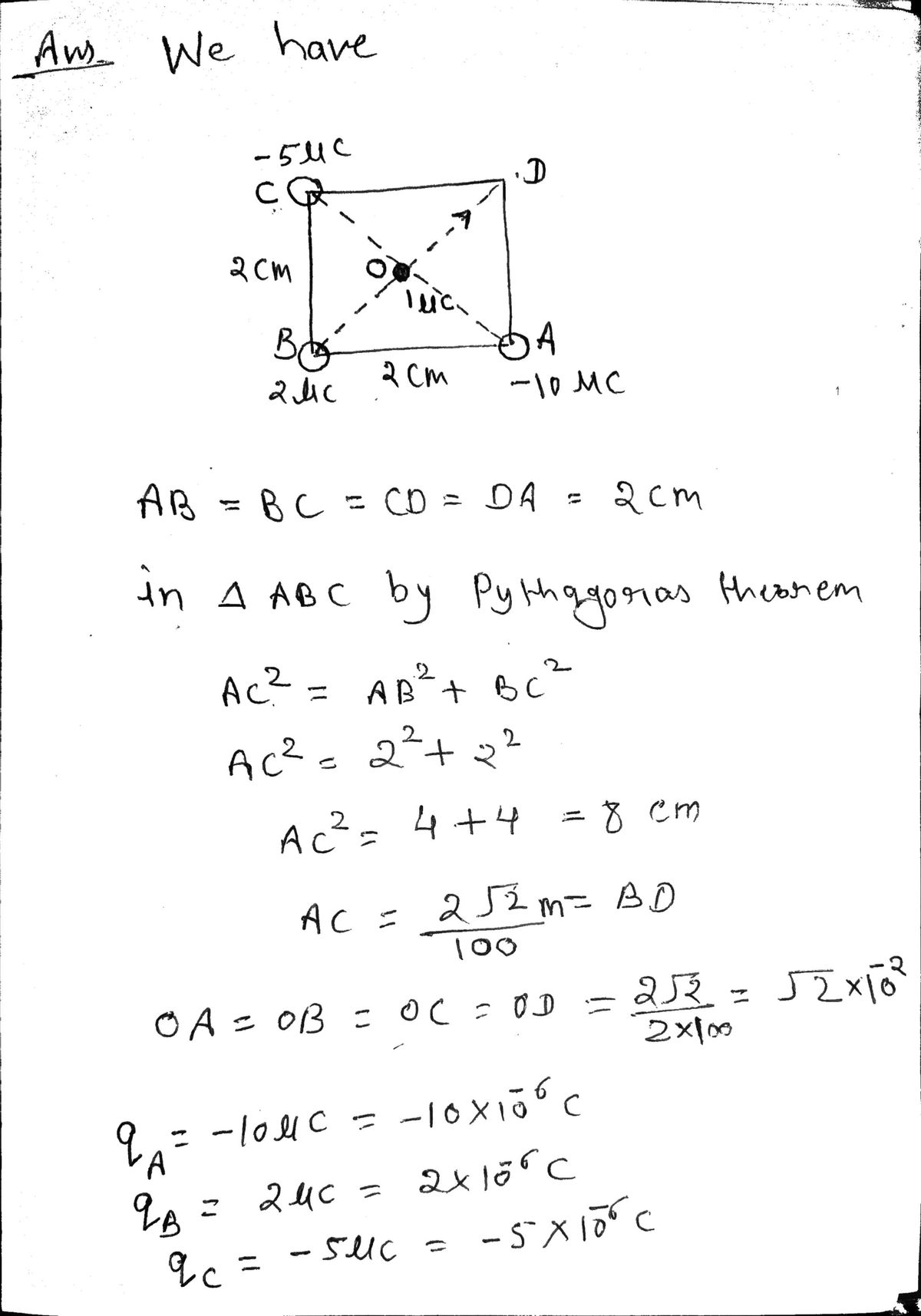(a) A 1μC charge is at the center of the square shown below. How much external work is needed to move it to the corner of the square (assuming it is initially and finally at rest)? -5 μC 2 cm + 2 μC 2 cm 1 μC - 10 μC (b) If the total energy of a system is negative, it is called a bound system. Otherwise, it is an unbound system. When the 1μC charge is at the corner of the square, is the system bound or unbound? (c) Suppose the four charges on the corners of the square are no longer fixed and are free to move. What will be the final kinetic energy of the luC charge?
(a) A 1μC charge is at the center of the square shown below. How much external work is needed to move it to the corner of the square (assuming it is initially and finally at rest)? -5 μC 2 cm + 2 μC 2 cm 1 μC - 10 μC (b) If the total energy of a system is negative, it is called a bound system. Otherwise, it is an unbound system. When the 1μC charge is at the corner of the square, is the system bound or unbound? (c) Suppose the four charges on the corners of the square are no longer fixed and are free to move. What will be the final kinetic energy of the luC charge?
Related questions
Question

Transcribed Image Text:(a) A 1μC charge is at the center of the square shown below. How much external work
is needed to move it to the corner of the square (assuming it is initially and finally
at rest)?
-5 μC
2 cm
+
2 με
2 cm
1 μC
- 10 μC
(b) If the total energy of a system is negative, it is called a bound system. Otherwise, it
is an unbound system. When the 1μC charge is at the corner of the square, is the
system bound or unbound?
(c) Suppose the four charges on the corners of the square are no longer fixed and are
free to move. What will be the final kinetic energy of the luC charge?
Expert Solution
Step 1

Step by step
Solved in 4 steps with 4 images
